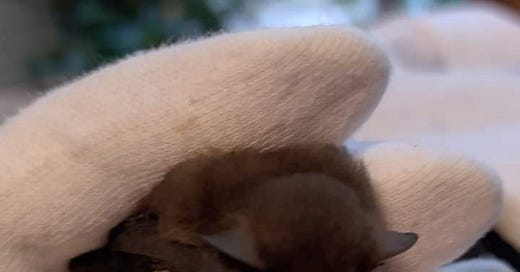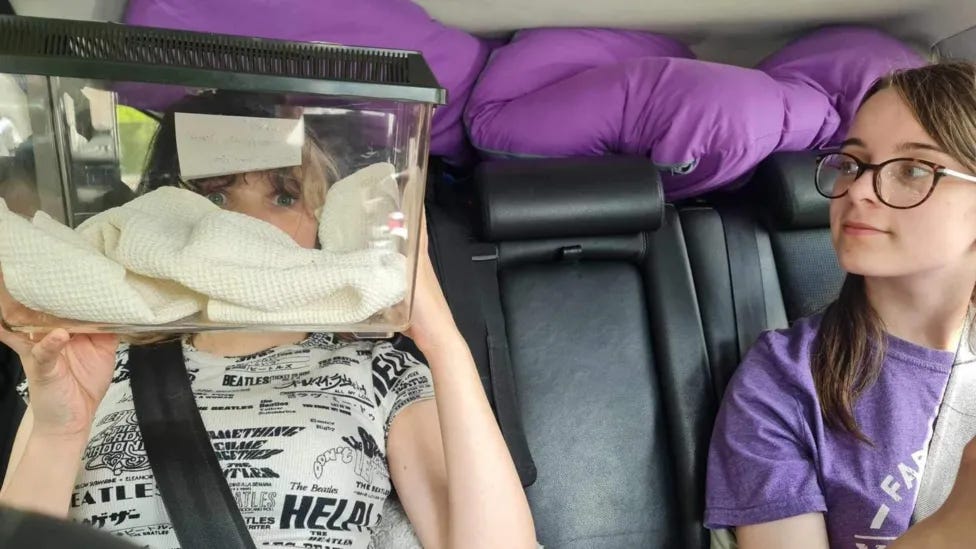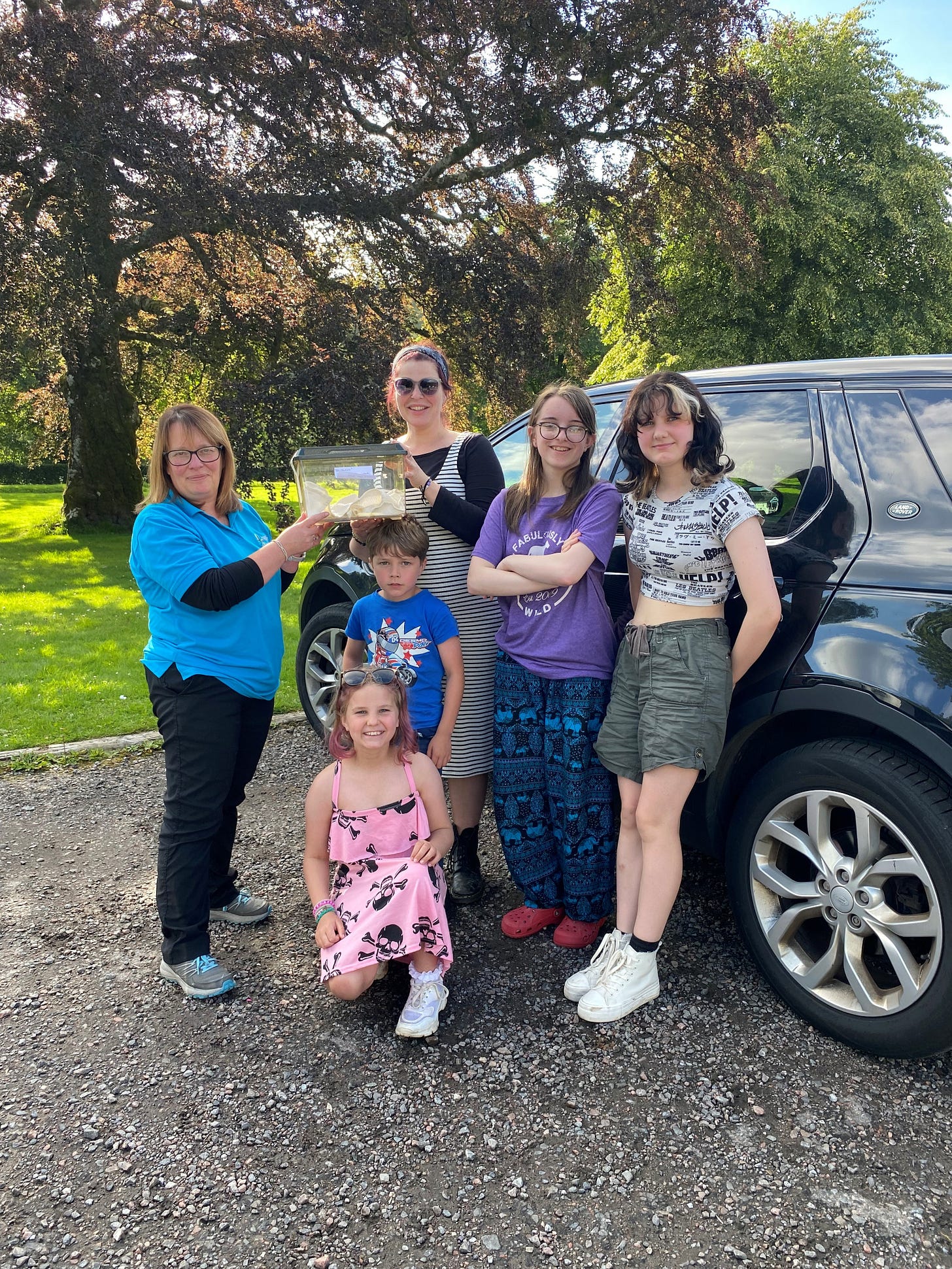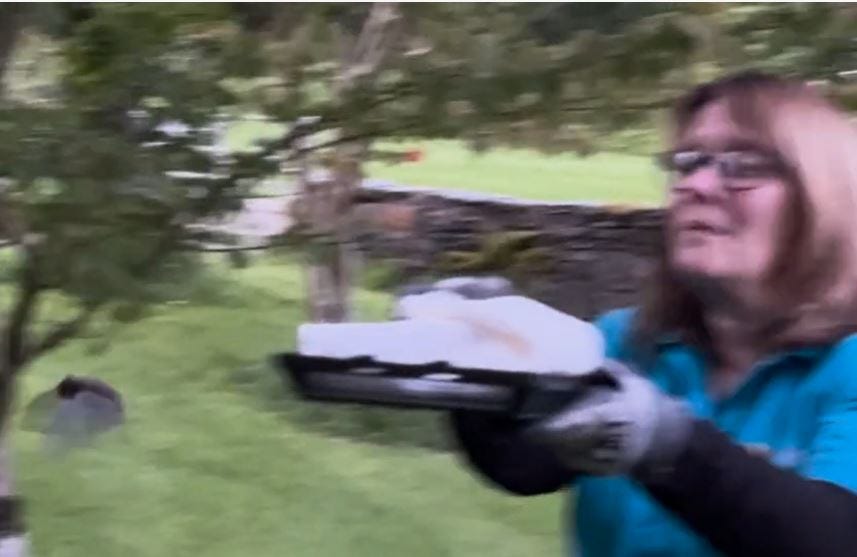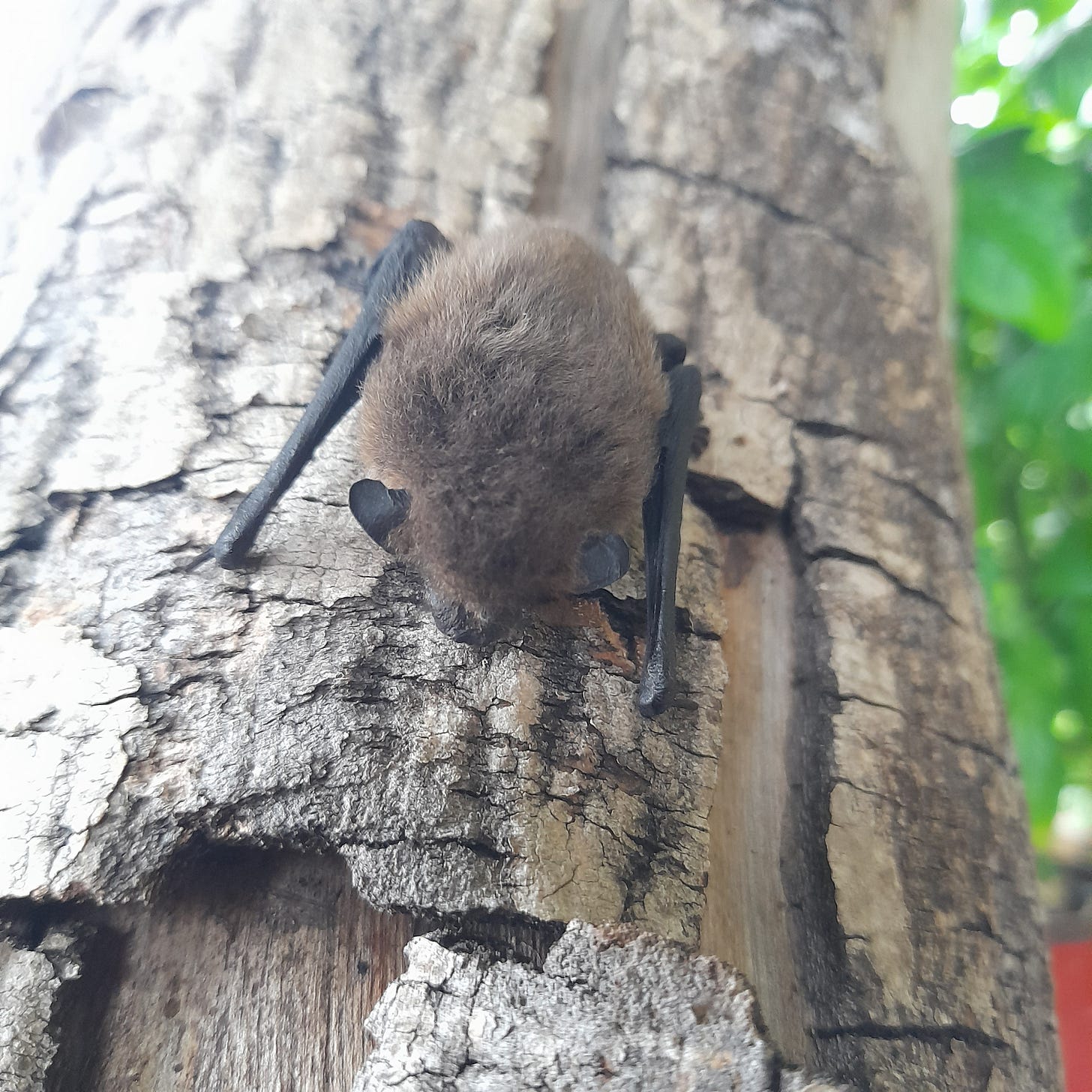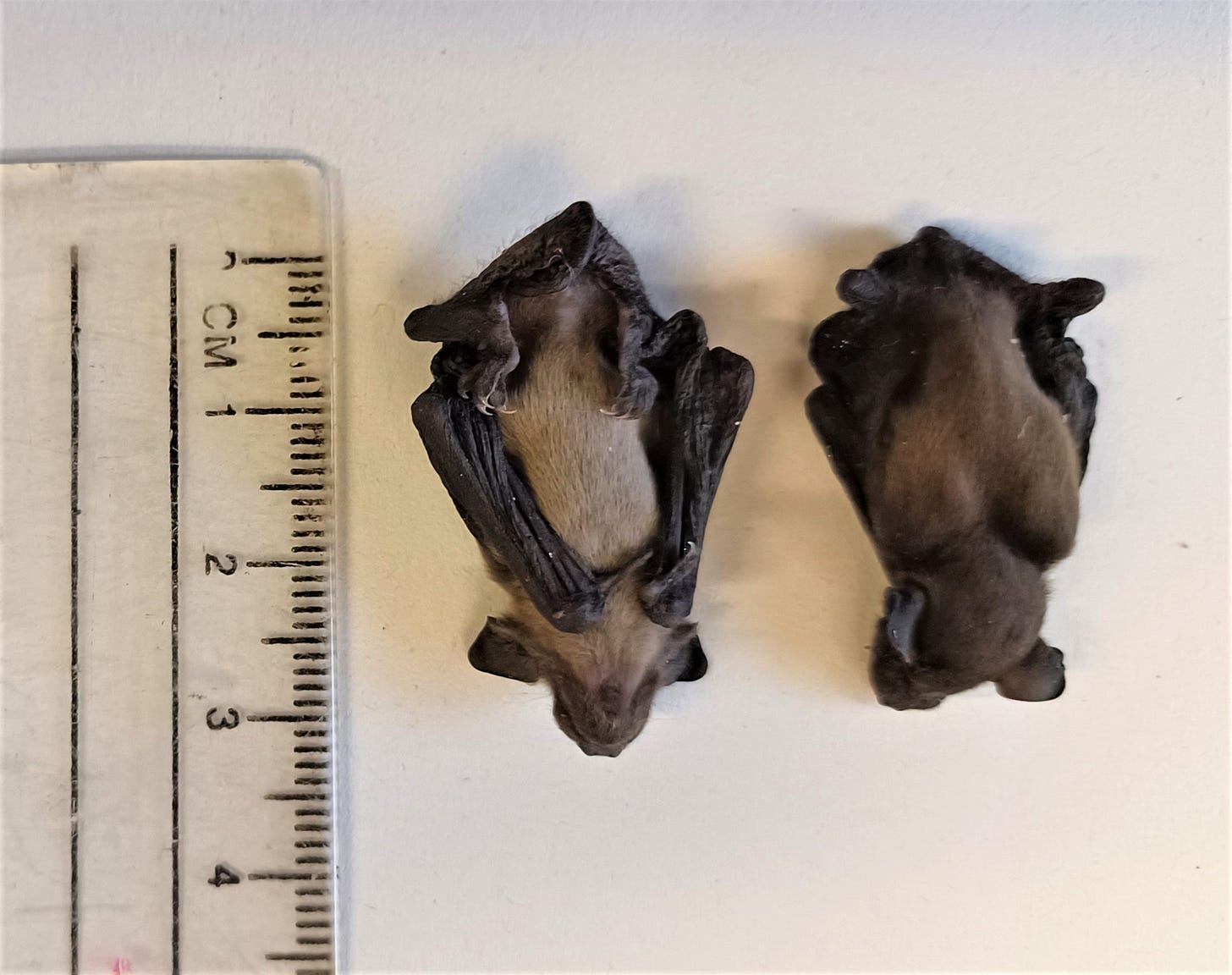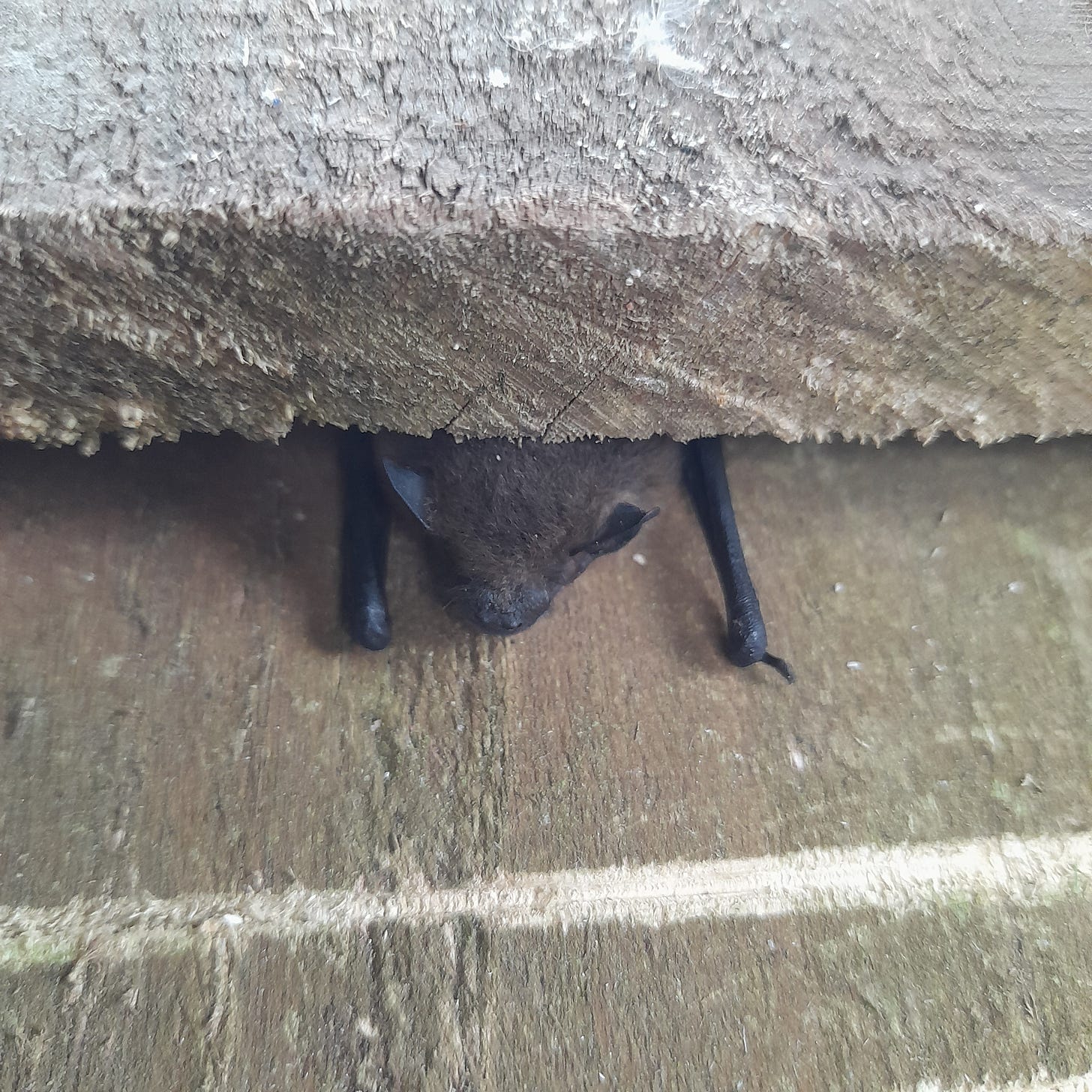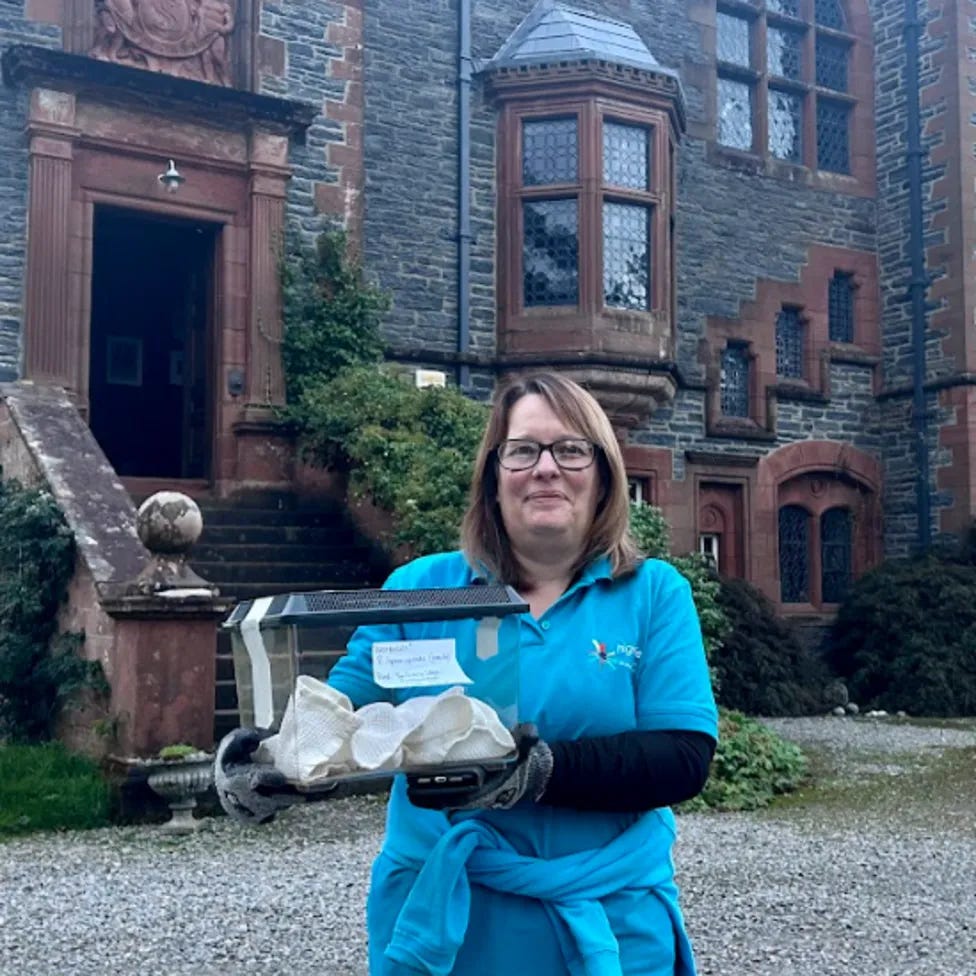The Tale of Raspberry the Pipistrelle
Eilidh-Ann describes a remarkable bat rescue and gives advice on what to do if you find a bat in your house
Mindlessly scrolling through social media last week, a picture stood out and grabbed my attention. It was a hand holding a bat and the post read “Hi everyone, I’m a bat rehabber in Glasgow, and need some help!......”
Being an avid fan of bats, I was immediately intrigued as to why a bat rehabber in Glasgow had posted a request for help in our local Ardnamurchan Community Group page. It turned out to be quite a story…
Some visitors holidaying in Kinlochmoidart in Lochaber had recently returned to their home in Glasgow, and whilst unpacking discovered a bat hiding away in their suitcase. These wonderful humans had done absolutely the right thing and contacted the Bat Conservation Trust for advice, and then been put in touch with Tracey Jolliffe an experienced bat rehabber living in Glasgow.
Tracey identified the bat as a female juvenile soprano pipistrelle and named her “Raspberry”. After a few days of feeding up and some flight practice, Raspberry was ready to go home and Tracey had turned to our local Community Page to look for help.
Kayleigh Darlington, a regular visitor to Kilchoan got in touch with Tracey to offer help getting Raspberry up the road from Glasgow, and I volunteered to transport her to Kinlochmoidart for her final release. To make the logistics easier, a group chat was created called ‘Bat Relay’ and the three of us worked up a plan for Saturday 27th July.
Kayleigh and her family collected Raspberry travelled up the A82 and across the Corran Ferry to Strontian. From here, I had the honour of taking this precious passenger on the final leg of her journey.
Arriving in Kinlochmoidart as the sun was setting, I met with estate owner Nino Stewart and manager Sarah Winnington-Ingram and family who were very pleased to welcome Raspberry back home.
We took her to the garden of the house she had come from and I started to open up the box, noticing other bats already on the wing in the area. Once out in the fresh air, Raspberry immediately started to wake up and look around her – I’m sure I even heard her whisper “I know this place!”. After a moment to get her bearings, Raspberry took flight, and as she crossed the garden I could see other bats zooming in to greet her. And just like that Raspberry was HOME!
We all watched for a few minutes as the bats flew around us and I really wish I had captured our smiles on camera – it was such an incredible moment.
Bats, despite their small size, are surprisingly long-lived. As a juvenile, Raspberry could live for as long as 10 years back home in Kinlochmoidart, making all the effort to return her home absolutely worthwhile.
This is the time of year when baby bats take their first flight. They are not very good at navigating and sometimes come in an open window or door instead of back to their maternity roost.
So let’s explore what’s happening in the world of these tiny, fascinating creatures and what you can do to help.
Pipistrelle bats bring new life to the world in late spring to early summer, typically around June. Female pipistrelles gather in cosy maternity colonies, creating a safe, warm environment for birthing and nurturing their pups. Each mother usually has one tiny, furless pup, though twins can sometimes make an appearance. At birth, these little ones are completely dependent on their mums.
Summer is a critical time for pipistrelle bat pups. Mothers are busy nursing their young, providing the essential nutrients they need through their milk. This bonding period is crucial for the pups' development. Mother bats take short feeding trips, always returning quickly to their waiting pups. Growth rates vary among the pups. Some grow rapidly and are nearly full-sized by the end of July, while others remain small for a bit longer. The rich, nutritious milk helps the pups grow strong and healthy during these crucial weeks.
Learning to Fly
Around three weeks old, young pipistrelle bats begin their flying lessons. This period is both exciting and challenging. As they navigate the skies for the first time, some young bats might end up on the ground. Recently, in Durness School, baby pipistrelle bats were discovered on the floor, highlighting this vulnerable stage of their development. While it's a natural part of growing up, it does pose risks to the small bats from predators and other dangers.
During these fledgling flights, mother bats continue to guide and encourage their young. Their presence and support significantly increase the chances of survival for these little adventurers.
Independence and Maturation
As summer draws to a close, usually around August, most young pipistrelles become adept fliers and hunters. They start to join the nightly foraging activities of the adults, gradually becoming more independent. By autumn, the young bats are fully weaned and ready to face the challenges of winter, whether it means hibernation or migration, depending on the local climate.
Understanding the life cycle of pipistrelle bats highlights the need to conserve their habitats. Maternity roosts are vital for raising young bats successfully. By protecting these roosts and maintaining a healthy environment rich in insects, we can support the survival and growth of these remarkable creatures.
What to Do If You Find an Immobile Bat Pup
Finding a bat on the ground can be concerning, especially when young bats are learning to fly.
You can sometimes find the entrance to a bat roost by looking round the outside of the dwelling and you might see lots of tiny droppings scattered at the base of the exit point. These droppings are made of midge wings and are totally dry ( and unlike mouse droppings) crumble to dust if rubbed between finger and thumb. Remember bats only need a hole the size of a 50pence piece.
Here’s what you can do:
1. Assess the Situation:
Watch the bat from a distance. It might just need a bit of rest before it can take off again.
Young bats who are taking their first flight can get easily lost and not be able to find their way back into the maternity roost. The very best thing to help this wee bat is to get the young bat back to its mother who will give it the very best care. Getting it to a licensed bat carer is second best. Therefore it is a great advantage to know where the roost is and even more importantly the exit/entrance point into that roost. That will be the first thing the helpline at the Bat Conservation Trust helpline will ask.
It might be if you let the young bat out, as it is getting dark currently about 10pm, it will be able to climb its way back into the entrance to the roost.
Contact the Bat Conservation Trust helpline number at 0345 1300 228, who can provide specific advice .
2. Gently Move the Bat to somewhere warm
Using a cloth or a piece of cardboard, gently pick up the bat and place it in a small box with ventilation holes. Always wear gloves if you need to handle the bat to protect yourself from potential bites or scratches
Do not try to feed the bat. It requires specialised care and diet that should only be provided by professionals. Water is vital however and a few drops in a shallow container (milk carton top works well) and place in box with the bat can help itself to water.
Keep the box in a quiet, dark and warm place to allow the bat to recover.
3. Place the bat strategically
Never leave a grounded bat ‘on the ground’ as they can’t take off from there – once rested the bat will need to be at least 5 ft off the ground as they drop down in order to fly.
Don’t you need a bat handling licence in the UK?
Yes - its true that in the UK, handling bats generally requires specific permissions and, in many cases, a licence due to their protected status. However, you do not need a licence to assist a bat in immediate distress. If you find a bat in need of urgent help, you can handle it to prevent further harm, but should contact a licensed bat worker as soon as possible for further assistance.
By taking these steps, you can help ensure the safety and well-being of any bat you find, contributing to the conservation of these fascinating creatures.
Final Thoughts
Pipistrelle bats are not just fascinating animals; they are integral to our ecosystem. As we enjoy the warm summer nights, we can be thankful for these tiny, nocturnal guardians that help control insect midge populations and contribute to the health of our environment. By having an understanding and appreciation of their life cycle, we can ensure that pipistrelle bats continue to thrive for generations to come.
If you do find a bat, contact the Bat Conservation Trust helpline number at 0345 1300 228. and remember - keep the bat warm. Ultimately, you want to get it back into the nursery roost with its mum.
Eilidh-Ann Phillips has been a countryside ranger in the wild, captivating expanse of West Lochaber since 1996. Now, as the High Life Highland Senior Ranger for South Highland, she is integral to a vibrant network that connects communities and schools to the nature, inspiring a collective appreciation for wildlife and heritage. Under her guidance, a passionate team of rangers across South Highland is dedicated to conserving the region's stunning beauty and wilderness, nurturing the next generation of guardians for the area’s breathtaking landscapes.


